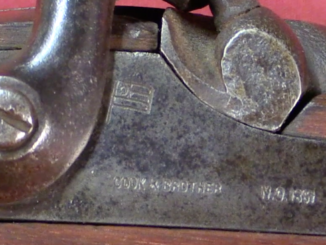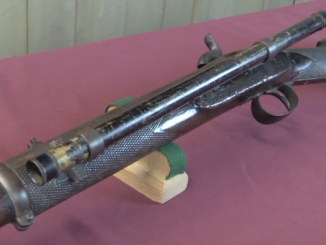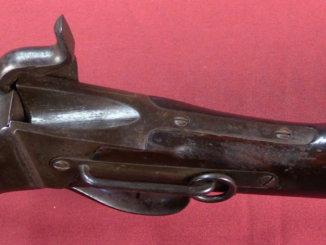Standard: https://jamesdjulia.com/item/52430-6-397/
Presentation: https://jamesdjulia.com/item/51957-17-397/
Iron frame: https://jamesdjulia.com/item/51957-13-397/
Griswold and Gunnison were rather unique among Confederate revolver manufacturers for their ability to actually create a reliable and high quality product and produce it on a regular and predictable schedule. So many of the Confederate revolvers were made by starry-eyed novices, but Griswold & Gunnison ran a proper professional manufacturing operation, and as a result were able to produce as many guns as all other Confederate revolver makers combined.
The Griswold & Gunnison gun was basically a copy of the Colt 3rd model Dragoon, with a 7 1/2 inch .36 caliber barrel, 6-shot cylinder, and brass frame. They have a subtle but recognizable slight rear tilt to the grips, and are virtually all identical, or as close to it as can be expected for hand-fitted guns from the 1860s. In addition, the guns were made with twisted iron cylinders (instead of steel, which was too difficult to procure), and the trusted pattern of the material is often visible on the finished product. The one variation is that at about serial number 1500, the barrel shank changed from rounded to octagonal.
Arvin Gunnison was gunsmith who had been making Colt type revolver in New Orleans before the war, who partnered with Samuel Griswold for the endeavor. Griswold was a very successful entrepreneur who had built Griswoldville on 4,000 acres of land south of Macon, Georgia. There he had a wide variety of businesses, including grist and saw mills, a candle factory, a foundry, and a cotton gin factory. With the assistance of Gunnison, he converted the cotton gin factory into a revolver factory in 1862, and produced about 100 revolvers per month until November of 1864. On the 22nd of that month, Griswoldville was overrun by Union forces and destroyed.




Slave labor? Did Messieurs Griswold and Gunnison use slaves in the production of these guns?
I don’t know, but slave labor in munitions production has proved disastrous in recent decades. For all we know, the slaves in question might intentionally sabotage their own products so that they backfire and kill the first guys to use them in combat.
Pavlovian question
With regards to the pikes, perhaps they were naval boarding pikes? Those were used by navies during much of the 19th century (and earlier of course) on ships to aid in repelling boarders, or when boarding. 19th century naval pikes were generally much shorter than the medieval and Renaissance era pikes you may be thinking of, and appear to have been used in a manner similar to a bayonet.
Pikes weren’t as commonly used as cutlasses, but most naval ships of that era had them on board, often stored upright against the masts.
That’s a good explanation, and quite likely correct. I find it very hard to imagine that the CSA would have ordered normal pikes. They had a shortage of firearms, but it wasn’t quite that bad. Besides, one would have had to have been a history buff to even know what normal pikes are in the 1860s. They were as obsolete as weapons of war as muzzle loading muskets are to us.
Nothing about the the CSA mades any kind of sense, then or now. It would only take one man with influence in that kind of situation who knew some history, or who knew just how abysmal the CSA’s industrial situation was, to suggested any weapon was better than none, and pikes would be an ‘obvious’ answer.
As I have said before: it is a little sad that such a good private collection of CSA guns is being broken up; but at least some of it is recorded on forgotten weapons.com . Thank you Ian
Fighting for ones beliefs makes no sense? Ho-kay, hero.
The exception being the western theater where there was a nightmare hodge podge of weapons used and not enough of those.there were several battles where the Confederates had unarmed men following the armed.a lot of farm tools were used as well.
On the contrary, the situation was ‘quite that bad’ as early as 1863, when GA governor Jos. E. Brown ordered pikes to be made — specifically for his ‘State Line’ corp of militia. Long story that, but it was done purely in deference to keeping what miniscule revolver production the entire CSA had (and Griswold was far and away the largest, with a total of approx. 3,000 made from 1862-64) in contrast to that of that North, being nearly 50x theirs, going for as long as it could — to the front lines.
Clean and simple design, look well optimized for manufacture even by today’s standard.
Anyone know where I can find a Griswold and Gunnison replica. My wife is Samuel Gunnison’s GGGrandaughter and I’d like to have one